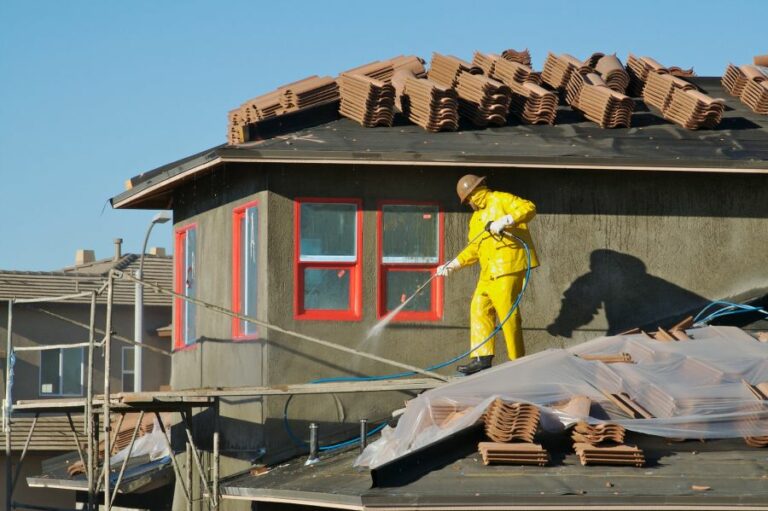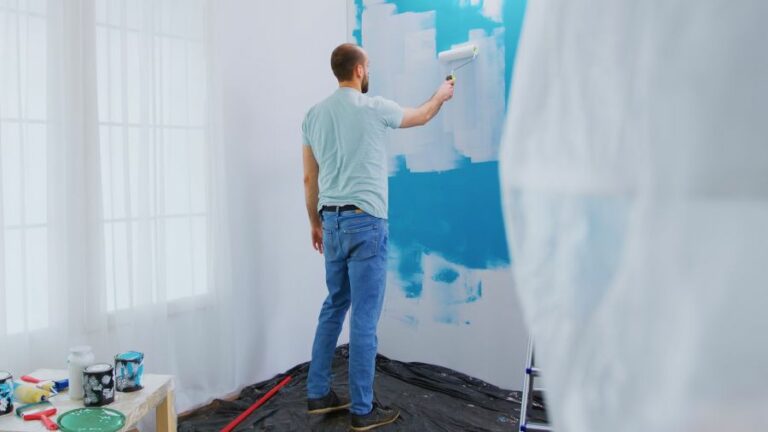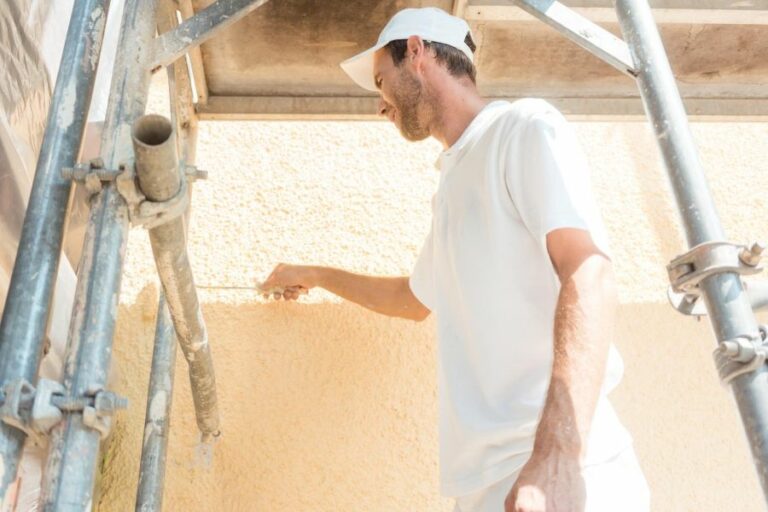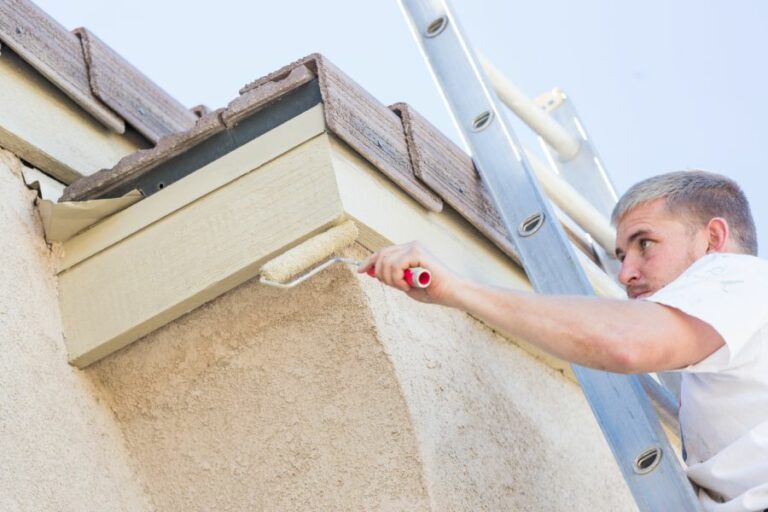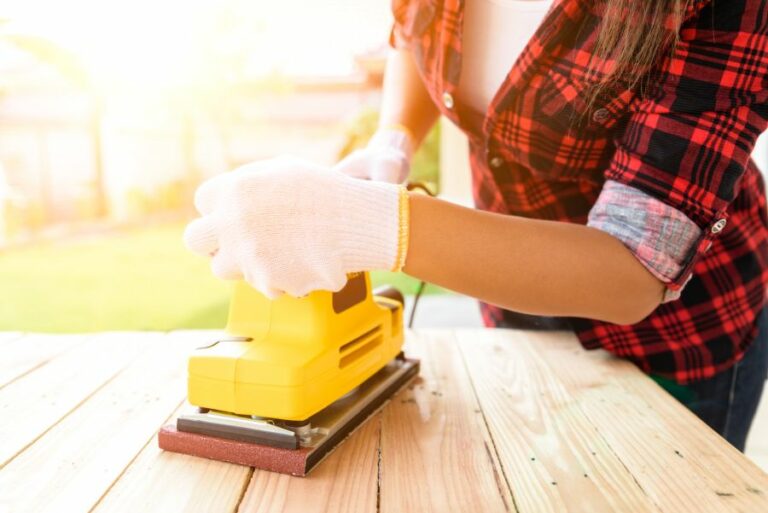Preserving Wood With Water-Repellent Paint. What Pros Say
When it comes to protecting and preserving wood, a crucial aspect is employing the right type of coating. Luckily, we have you covered with water-repellent paint solutions that will prove to be a game-changer. Watch and wonder as your wooden surfaces become resistant to moisture and last significantly longer.
Preserving wood with water-repellent paint:
Preserving wood with water-repellent paint is an effective method to protect wood structures and surfaces from water damage, decay, and insect attacks. Choosing the right paint, properly preparing the wood surface, and following the correct application process ensure the durability and longevity of the wood features. Regular maintenance enhances the paint’s performance and protects the wood structure.

Interested in keeping your wooden structures looking great and lasting longer? Discover how water repellent paint not only preserves wood but also enhances its aesthetic appeal. Read on to unlock the secret to the perfect wood protection!
Contents
- 1 Protecting Wood Surfaces with Water-Resistant Paint
- 2 Is Waterproof Paint Suitable for Wood?
- 3 Does Exterior Paint Offer Wood Protection?
- 4 Top Waterproofing Solutions for Wooden Surfaces
- 5 Understanding Water-Repellent Wood Preservatives
Protecting Wood Surfaces with Water-Resistant Paint
Wood is a versatile and beautiful material, but it is also susceptible to damage from water, rot, and insects. Preserving wood with water-repellent paint is a practical and effective way to protect and prolong the life of your wood structures and features.
• Importance of Water Repellent Paint for Wood
Exposure to water is one of the leading causes of damage to wood structures. Over time, moisture can cause wood to crack, warp, and rot, eventually leading to structural failure and costly repairs.
Water-repellent paint creates a barrier between the wood and moisture, helping to protect the surface from damage.
Furthermore, water-repellent paint can effectively prevent the growth of molds, mildew, and algae on wood. These organisms thrive in damp conditions and can cause additional damage, as well as health issues.
Thus, preserving your wood with water-repellent paint is not only an aesthetic choice but a functional one as well.
• Choosing the Right Water Repellent Paint
There are many water-repellent paints available in the market, each with its unique features and benefits. When selecting water-repellent paint for your wood, consider the following factors:
- Application Surface: Ensure the paint is suitable for the intended wood type and surface, such as wooden decks, fences, furniture, or siding.
- Durability: High-quality water-repellent paints provide long-lasting protection, some offering up to 10 years of wood preservation.
- Eco-friendliness: Look for water-repellent paints with low volatile organic compound (VOC) levels, as these are better for the environment and human health.
- Appearance: Some paints offer a transparent finish, allowing the natural wood grain to show through, while others come in various colors and opacity levels to match your design preferences.
- Sealant vs. Paint: While both create a protective barrier for wood, water-repellent paints usually provide a thicker layer and aesthetic appeal, whereas sealants focus more on protection capabilities.
• Preparing the Wood Surface
Proper surface preparation is crucial to the success and durability of the water repellent paint application. Follow these steps for the best results:
- Cleaning the Surface: Remove any dirt, debris, or loose paint from the wood surface. A pressure washer or stiff brush can be helpful in this process. Allow the wood to dry thoroughly before proceeding.
- Sanding: To ensure the best possible adhesion, sand the wood surface with medium-grit sandpaper (approximately 80-100 grit). Remove any dust with a tack cloth.
- Repairing Damaged Areas: Fill any cracks, holes, or damaged areas with exterior-grade wood filler and sand again for a smooth finish.
- Applying a Wood Preservative: For added protection, consider using a compatible wood preservative before painting, which can help prevent insect damage and decay. Ensure the preservative is fully dry before proceeding.
• Application of Water Repellent Paint
After preparing the surface, you can begin the process of applying the water repellent paint. I recommend following these steps:
- Stir well: Always stir the paint thoroughly before application to ensure a consistent finish.
- Choose the right tools: Use a high-quality brush, roller, or sprayer for the application of water-repellent paint. Remember, proper application is essential for lasting results.
- Follow manufacturer’s instructions: Pay close attention to the manufacturer’s recommendations for optimal layer thickness, drying times, and temperature conditions.
- Apply evenly: Apply an even coat of water-repellent paint to the wood surface, taking care to avoid visible brush marks and overlap areas. Always work in small sections for a more controlled application.
- Second coat: Most water-repellent paints require at least two coats for maximum effectiveness. Wait until the first coat is completely dry before applying the second one.
- Cleanup: Ensure you clean all tools and applicators with soap and water or the recommended cleaner before the paint dries, as water-repellent paint can be challenging to remove once dry.
• Maintaining Water Repellent Paint
To enhance the longevity and performance of your water repellent paint, regular maintenance is necessary. Inspect the wood surfaces yearly and touch-up any areas showing signs of wear or damage.
Additionally, properly maintaining and caring for your wood features, such as regular cleaning and surface treatments, can extend the life of the paint and overall wood structure.
In conclusion, preserving wood with water repellent paint is an effective and lasting way to protect your wood structures and surfaces from water damage, decay, and insect attacks.
By carefully selecting the right paint, adequately preparing the wood surface, and following the correct application process, you can ensure the durability and longevity of your wood features for years to come.
Is Waterproof Paint Suitable for Wood?
Waterproofing paint is a valuable solution to protect various surfaces from water damage and moisture, but homeowners often wonder if it’s suitable for application on wood. The answer is yes; waterproofing paint can be applied on wood to shield it from water absorption and decay.
However, specific steps and considerations need to be taken to ensure the longevity and effectiveness of the paint on wood surfaces.
• Benefits of Waterproofing Paint for Wood
Wood is an incredibly versatile and aesthetically pleasing material used in various applications, including furniture, fences, decks, and even house frames. However, wood is susceptible to water damage, which can lead to wood rot, mold growth, and loss of structural integrity.
Waterproofing paint serves as an extra layer of protection that shields the wood from damage linked to moisture and water exposure.
Some key benefits of using waterproofing paint on wood include:
- Durability: Waterproofing paint extends the lifespan of the wood by protecting it from water damage and decay.
- Mold prevention: It helps prevent mold growth, which can pose significant health risks.
- Aesthetics: Waterproofing paint can enhance the appearance of wood surfaces and is available in various colors and finishes to match your desired style.
• Preparing Wood for Waterproofing Paint Application
Before applying waterproofing paint to a wood surface, it is crucial to prepare the surface to ensure proper adhesion and long-lasting results. Here are the steps to follow:
– Step 1: Cleaning the Surface
Remove dirt, dust, and any loose particles from the wood surface. You can use a stiff-bristle brush or a pressure washer for this purpose. If there are any stains or mildew present, clean the surface with a solution of warm water and mild detergent, then rinse thoroughly.
Allow the wood to dry completely before proceeding to the next step.
– Step 2: Sanding the Surface
Sanding the wood surface is essential to ensure proper adhesion of the waterproofing paint. Use medium-grit sandpaper to roughen the surface, then switch to fine-grit sandpaper to achieve a smooth finish. Remember to sand in the direction of the wood grain.
After sanding, wipe off any dust with a clean, damp cloth.
– Step 3: Treating the Wood
Treat the wood with a wood preservative, especially if it’s untreated lumber, to prevent wood-boring insects and fungal decay. Follow the manufacturer’s instructions for the appropriate application method and drying time.
• Applying Waterproofing Paint to Wood
Once your wood surface is clean, sanded, and treated, it’s time to apply the waterproofing paint. Here’s a step-by-step guide:
– Step 1: Choose the Right Waterproofing Paint
Select a high-quality waterproofing paint specifically formulated for wood surfaces. Consult the paint manufacturer’s recommendations for the ideal application method and drying time.
Remember that transparent or semi-transparent waterproofing paint will allow the wood grain to show through, while solid waterproofing paint will offer more color options and a uniform appearance.
– Step 2: Apply Primer (optional)
Some waterproofing paints require a primer, while others do not. Check the manufacturer’s instructions to determine if your chosen paint product requires a primer. If necessary, apply a coat of primer to the wood surface, following the primer manufacturer’s guidelines for application and drying time.
– Step 3: Apply Waterproofing Paint
Using a brush, roller, or sprayer, apply the waterproofing paint to the wood surface according to the manufacturer’s recommendations. Ensure that you cover the entire surface with an even, consistent layer of paint. Allow the paint to dry for the specified time before applying a second coat if needed.
– Step 4: Inspect and Maintain
Once your waterproofing paint has dried and cured, inspect the surface to ensure complete coverage. Regular inspections and touch-ups are vital to maintaining the effectiveness of the waterproofing paint over time.
• Tips for Ensuring the Durability of Waterproofing Paint on Wood
To maximize the benefits of waterproofing paint on wood surfaces, consider the following tips:
- Choose a waterproofing paint with UV-resistant properties, especially for outdoor wood surfaces, to prevent fading and degradation caused by sunlight exposure.
- If possible, apply waterproofing paint in favorable weather conditions, not too hot, cold, or humid, to ensure proper curing and adhesion.
- Regularly inspect the painted surface for signs of wear, cracks, or peeling, and perform touch-ups as needed.
In conclusion, waterproofing paint can be an effective solution to preserve the integrity and appearance of wood surfaces. By following the proper preparation and application steps and considering the tips mentioned above, you can ensure lasting protection for your wood surfaces.
Waterproofing Paint | Usage on Wood | Additional Information |
|---|---|---|
Water-based Waterproofing Paint | Yes, but it may require additional protection. | – Allows wood to breathe and avoid trapping moisture – May need a sealant or topcoat for added protection |
Oil-based Waterproofing Paint | Yes, but it may darken the appearance of the wood. | – Creates a more durable barrier against water – May need a sealant for added protection – Can darken wood appearance. |
Waterproofing Stains and Sealers | Yes, specifically designed for wood. | – Designed to protect and enhance the appearance of wood – Provides both waterproofing and UV protection. |
Does Exterior Paint Offer Wood Protection?
Wood is a popular choice when it comes to outdoor structures like decks, fences, and furniture due to its natural beauty and durability. However, without the right protection, wood can be susceptible to rot, decay, and damage from weather elements and insects.
One commonly used solution to protect and preserve wood is outdoor paint.
• The Benefits of Outdoor Paint for Wood Protection
– Weather Resistance
Exterior paint creates a barrier that helps protect the wood from harmful ultraviolet (UV) rays, moisture, and temperature fluctuations.
These elements can cause the wood to warp, crack, and fade over time. Outdoor paints are designed to withstand these weather conditions and extend the life of your wood structure.
– Insect Deterrent
Some exterior paints contain insecticides that deter wood-destroying insects such as termites and carpenter ants. By using these paints, you are not only protecting the wood against weather damage but also minimizing the risk of insect infestations.
– Aesthetic Appeal
In addition to protection, outdoor paints enhance the appearance of wooden structures. They come in various colors and finishes, allowing you to bring new life to your exterior projects while also preserving the wood for years to come.
• Choosing the Right Paint for Wood Protection
Not all paints are created equal, and it’s essential to choose the right one for your outdoor wood structure. Here are some key factors to consider when selecting outdoor paint:
– Acrylic or Oil-Based Paint
Acrylic (water-based) paints are easier to clean up after application and generally have less odor. They also tend to have better resistance to UV rays and moisture, making them a popular choice for outdoor wood protection.
On the other hand, oil-based paints are highly durable and provide excellent adhesion to wood surfaces. However, they often take longer to dry and emit strong fumes during application. Both types of paints have their pros and cons, so consider your specific needs and preferences when making a decision.
I recommend using high-quality acrylic paint for outdoor wood protection as it offers good weather resistance and easier cleanup.
– Primer and Paint in One
Some products on the market are labeled as “paint and primer in one.” While these products can save time and effort, they may not provide the same level of protection as applying a separate primer and paint.
A dedicated primer creates a stronger bond with the wood surface and provides an optimal foundation for the paint.
Although paint and primer in one products may be suitable for some projects, I recommend using a separate primer for optimal wood protection, especially if the wood is exposed to extreme weather conditions.
– Surface Preparation
Proper surface preparation is essential for the paint to adhere well and provide long-lasting protection. Before you begin painting, ensure that the wood is clean and free of loose or peeling paint, dirt, and mildew. You may need to sand and prime the surface to ensure optimal adhesion.
• Tips for Applying Outdoor Paint for Wood Protection
– Choose the Right Time
Weather conditions play a significant role in the drying and curing of paint. Ideally, you should select a dry, mild day with low humidity and no imminent rain to paint your outdoor wood structure. This will ensure proper adhesion and drying of the paint.
– Use Quality Brushes and Rollers
Investing in high-quality brushes and rollers will provide better results and make the application process much smoother. High-quality tools will allow for even coverage and minimize brush marks and roller streaks.
– Apply Multiple Coats
To achieve the best protection for your wood, consider applying two or more coats of paint. This will provide a thicker barrier against weather elements and extend the life of your wood structure.
In conclusion, outdoor paint does indeed protect the wood from various elements when applied correctly. To maximize the protection and longevity of your outdoor wood projects, select high-quality paint and follow proper preparation and application techniques.
With these steps, your wood will maintain its beauty and durability for years to come.
Top Waterproofing Solutions for Wooden Surfaces
• Introduction
Wood is a versatile material used in various applications, including furniture, construction, and decoration. However, wood is also prone to water damage due to its porous nature. To protect the wood and prolong its lifespan, waterproofing is essential.
• Types of Waterproofing for Wood
– Wood Sealants
Wood sealants are a popular and cost-effective method for waterproofing wood. They protect the wood from water damage by sealing the pores and creating a waterproof barrier on the surface of the wood.
Advantages
- Easy to apply and maintain
- Effective in protecting wood from water damage
- Available in clear and tinted varieties
Disadvantages
- May alter the appearance of the wood
- Require regular reapplication, depending on exposure to the elements
I recommend using a high-quality wood sealant to protect your wood from water damage. One such product is Thompson’s WaterSeal line of sealants.
– Wood Stains and Finishes
Wood stains and finishes not only give wood a desired look but also provide a level of protection against water damage.
Advantages
- Enhance the appearance of wood
- Provide a certain level of water resistance
- Available in various colors and formulations
Disadvantages
- May require multiple coats for optimal performance
- Can be more expensive than other waterproofing methods
A popular and effective wood stain and finish is the Minwax Helmsman Spar Urethane, which is specifically designed for exterior wood protection.
– Wood Preservatives
Wood preservatives are chemicals that help protect wood from decay, insects, and other environmental factors. They can be applied to the wood surface or incorporated into the wood during the manufacturing process.
Advantages
- Effective in protecting wood from rot and insect damage
- Can prolong the lifespan of wood
Disadvantages
- Some preservatives may be harmful to the environment and human health
- May require professional application
Wood preservatives like copper-based compounds are effective in protecting wood from decay and insects. However, it is essential to carefully follow the manufacturer’s instructions and safety precautions.
• Factors to Consider When Choosing the Best Waterproofing for Wood
– Type of Wood
Different wood species have varying levels of resistance to water damage. Hardwoods like oak and teak are more resistant to water damage than softwoods like pine or cedar. Consider the type of wood you are working with when choosing a waterproofing product.
– Exposure to the Elements
The level of protection needed will depend on the wood’s exposure to moisture and other environmental factors. For outdoor wood structures, a more durable and robust waterproofing product will be necessary.
– Desired Appearance
The type of waterproofing product you choose will affect the final appearance of the wood. Wood sealants typically provide a clear, glossy finish, while stains and finishes add color and texture. Consider your aesthetic goals before deciding on a waterproofing solution.
– Application Process
Some waterproofing products are more straightforward to apply than others. Evaluate your skill level, the size of the project, and the time you can commit to maintaining the wood before selecting a waterproofing option.
• Proper Application and Maintenance for Waterproofing Wood
No matter which waterproofing solution you choose, proper application and maintenance are critical for success. Failure to apply and maintain the product correctly will limit its effectiveness and potentially compromise the integrity of the wood.
– Surface Preparation
Before applying any waterproofing product, clean, sand, and dust the wood surface thoroughly. For optimal adhesion and performance, the wood must be free of dirt, oils, and residues.
– Application
Follow the manufacturer’s instructions regarding application techniques, drying times, and recommended number of coats. Applying too much or too little product can impact the effectiveness of the waterproofing.
– Regular Maintenance
Regularly inspect the wood for signs of wear, peeling, or discoloration, and reapply the waterproofing product as needed. Keep up with maintenance to ensure the longevity of the wood and its protection from water damage.
• Conclusion
There is no one-size-fits-all answer to the best waterproofing for wood, as it depends on factors such as the type of wood, exposure to elements, desired appearance, and individual skill level.
However, by understanding the available options and considering essential factors, you can make an informed decision on which method is best for your specific case. Always follow product guidelines and prioritize regular maintenance to ensure the greatest level of protection and longevity for your wood.
Understanding Water-Repellent Wood Preservatives
A water-repellent preservative is crucial in maintaining and prolonging the life and quality of wooden structures, furniture, and surfaces.
• Composition of Water Repellent Preservative
Water-repellent preservatives are specially formulated chemical solutions designed to protect wooden surfaces from water and moisture damage. These solutions typically contain the following:
- Wax emulsions: Provide an effective barrier against water absorption.
- Anti-fungal agents: Protect against wood decay and fungal rot.
- UV inhibitors: Shield wood surfaces from the damaging effects of ultraviolet rays.
- Alkaline stabilizers: Maintain the pH balance of the preservative, ensuring its effectiveness.
Additionally, these preservatives are often solvent-based or water-based, depending on the specific needs of the wood surface being treated.
• Benefits of Using Water-Repellent Preservative
The use of water-repellent preservatives provides numerous benefits for the longevity and appearance of wooden structures and surfaces:
- Protection against swelling and warping: Wood is often susceptible to warping and swelling due to excessive exposure to moisture. A water-repellent preservative effectively shields the wood from absorbing moisture, thus preventing damage.
- Improved dimensional stability: The application of water-repellent preservatives aid in maintaining the original dimensions and shape of the wood, preventing undesirable deformation or shrinkage.
- Reduced risk of decay and rot: Moisture is one of the primary causes of rot and decay in wood. By repelling water, the preservative protects the wood from fungal growth and degradation.
- Enhanced appearance: A water-repellent preservative prolongs the life of paint and stains applied to the wood, preventing peeling or discoloration due to moisture exposure.
- Prevention of chemical leaching: Wood treated with some preservatives runs the risk of chemicals leaching into the surrounding environment. Water-repellent preservatives minimize this risk, providing a more eco-friendly option.
• Application of Water Repellent Preservative
Applying a water-repellent preservative requires careful attention to detail, ensuring thorough protection and an even finish:
- Prepare the wood surface: Begin by removing any dirt, rust, or old paint from the wooden surface. Sanding can be beneficial to achieve a smooth, even surface for the preservative to adhere to.
- Choose the right preservative: Consider factors such as the type of wood, its intended use, and the desired appearance when selecting a water-repellent preservative. It is crucial to follow the manufacturer’s instructions for optimal results.
- Apply the preservative: Use a brush, roller, or spray to evenly coat the wood surface with the water-repellent preservative. Avoid over-application to prevent a sticky or glossy finish.
- Allow drying time: The drying time depends on factors like the wood type, preservative formula, and environmental conditions. It is essential to allow the wood to dry thoroughly before applying any paint or stain.
- Consider maintenance: Regular inspection and maintenance are critical to ensuring the long-lasting effects of water-repellent preservatives. Reapply as needed to maintain optimal protection.
• Personal Recommendations and Expert Tips
Based on experience and expertise in the field, the following recommendations can be considered when using water-repellent preservatives:
- Always invest in a high-quality, reputable water-repellent preservative for optimum protection and long-lasting results.
- When applying the preservative outdoors, choose a day with favorable weather conditions – ideally, one with low humidity and no rain.
- Always follow the manufacturer’s instructions for the correct ratio and method of application.
- For outdoor wooden structures, consider opting for a water-based preservative, as it is eco-friendly and less toxic.
By following these guidelines and recommendations, one can successfully apply a water-repellent preservative to wooden surfaces, ensuring their protection and longevity for years to come.

